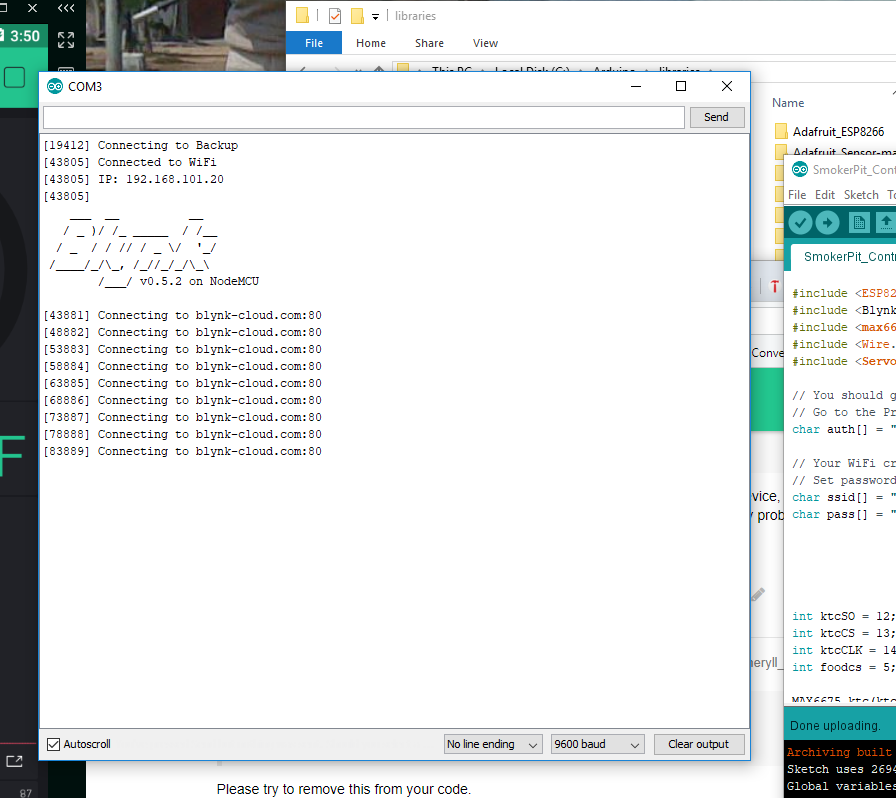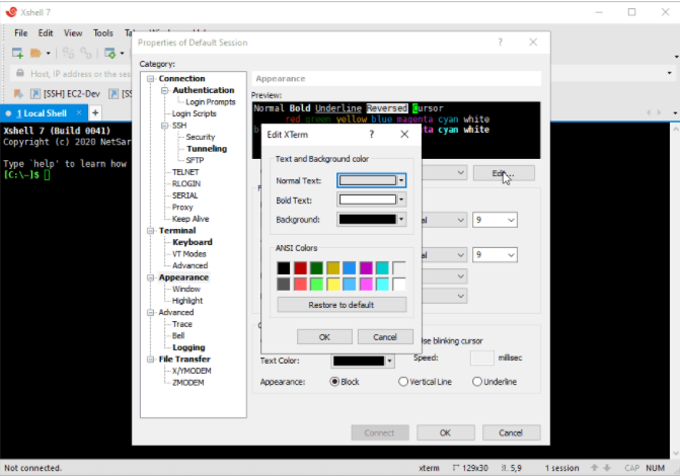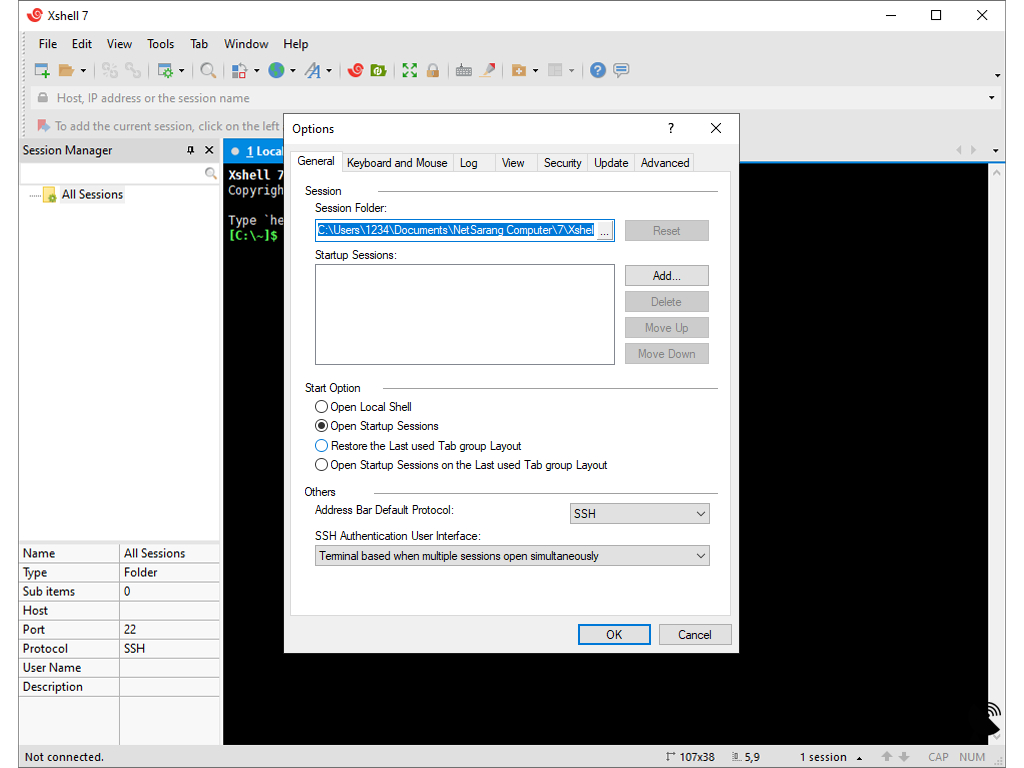SSH For IoT - Keeping Your Devices Safe And Connected
Imagine having your smart home gadgets, industrial sensors, or even that little computer board like a Raspberry Pi, all working together, even when you are far away. You might want to check on them, make sure they are doing their job, or perhaps give them a quick update. This is where a very clever trick called Secure Shell, or SSH, comes into play for your Internet of Things (IoT) devices. It is, in a way, the perfect approach to keep an eye on and manage your connected things from a distance, making sure everything stays private and sound.
When you think about all the smart devices around us, from the thermostat that learns your habits to the cameras watching your front door, they are always sending and receiving information. You want to make sure that information, and access to those devices, stays only with you. This is where the idea of secure communication becomes super important. SSH offers a way for your devices to talk to you over the internet without someone else listening in, which, you know, is a pretty big deal.
This particular guide will walk you through how to set up these secure connections. You will get to see how SSH, which is a kind of digital bodyguard for your data, helps keep your IoT gadgets safe. It means your remote access to these devices is not just convenient but also very reliable and quite easy to get going. We will go through the steps, so you can supervise your IoT setup, making sure it is protected from any unwelcome visitors or possible troubles. Really, it's all about making sure your connected world is a safe place.
- Johnny Rivers Wife
- Joe Rogan Height In Feet
- John Bolz Actor
- John Bolz Actor Picture
- Jo In Sung Song Hye Kyo
Table of Contents
- What Is Secure Shell, and Why Do We Need It for IoT?
- Making Your IoT Connections Safe with SSH
- How Can You Access Your IoT Devices from a Windows Computer Using SSH for IoT?
- Setting Up SSH for IoT on Android Devices
- Using SSH for IoT with AWS Cloud Services
- Getting Your IoT Devices Ready for SSH Access
- Overcoming Connection Challenges with SSH for IoT
- Is There a Way to Access Your IoT Devices from Anywhere with Web SSH for IoT?
What Is Secure Shell, and Why Do We Need It for IoT?
Secure Shell, or SSH as people usually call it, is a special kind of network method that lets you communicate over a network that might not be secure in a very safe way. Think of it, in a way, like a private, guarded pathway for your information. It lets only those who are supposed to have access to your IoT devices get in. Unlike other ways of talking over the internet that might leave your information out in the open, SSH actually scrambles all the data that goes between your computer and your device. This means sensitive things, like your login words, are kept hidden from prying eyes. This particular safety feature is the main reason why SSH is so important for keeping your smart gadgets secure, especially when they are out there on the internet. You see, when you are dealing with things like smart thermostats or even big industrial sensors, they often need to be checked on, updated, or even fixed from afar. SSH makes sure that when you do this, your information stays private and sound. It is, basically, a fundamental idea for anyone who is looking after connected devices these days.
Making Your IoT Connections Safe with SSH
When you want to keep your Internet of Things setup secure, SSH is, quite honestly, a really good choice. It makes sure that when you reach out to your devices from a distance, everything is kept safe, is pretty straightforward to put into action, and you can truly depend on it. This particular guide is going to walk you through how to use the SSH method to keep a close watch on your IoT networks. It helps you keep them safe from any bad stuff that might try to get in. Beyond just being handy, security is the main thing here. So, you know, making sure your IoT devices, like those little Raspberry Pi computers or other Linux devices that do edge computing, are set up for SSH remote access means following some really good security advice. This article, in fact, lays out some of the best ways to do just that. It's about making sure your connection is not just there, but also very well protected. You can, for instance, access your IoT devices from, well, pretty much anywhere, and SSH helps make that happen securely. It’s a good feeling, in a way, to know your devices are safe.
How Can You Access Your IoT Devices from a Windows Computer Using SSH for IoT?
If you are someone who uses a Windows 10 computer, and you want to get to your IoT devices from a distance, this part is for you. In this particular walkthrough, we will show you, step by step, how to use SSH to connect to your IoT devices right from your Windows 10 machine. This includes putting in the right computer programs, getting your device ready, and then actually making that secure connection happen. It is, in some respects, simpler than you might think. Many people are finding that setting up a way to access their IoT devices through a web SSH server on Windows 10 is becoming a rather popular way to manage things from afar. It offers a good blend of ease and security. So, if you are looking to get a handle on your smart home system or other connected gadgets, learning this is, well, pretty useful. You will find that having this skill is, in a way, quite important for anyone who looks after connected things these days. It just makes things, you know, work better.
Setting Up SSH for IoT on Android Devices
It's pretty neat how you can actually use your Android phone or tablet to keep an eye on and even control your IoT devices from a distance. By putting SSH together with your Android gadget, you can manage your connected things with, you know, a good bit of ease, all while keeping everything safe. Getting connected to your IoT devices through SSH on an Android opens up, honestly, a whole lot of possibilities for looking after them and even automating some tasks. It's a skill that has become, in some respects, really important in our interconnected world today. If your IoT devices are sitting behind a router, getting remote access to them often means you will need to set up something called "port forwarding." In this rather complete guide, we will walk you through the whole process of getting remote SSH access ready for your IoT devices that are behind a router, all by using an Android device. As we go further into this guide about remote SSH for IoT behind a router, you will see just how convenient and secure this can be. There are also ways to access your IoT devices using web SSH on Android, which can be a free way to get remote access and control your devices. This guide really gets into the details of web SSH, showing you how to connect to your IoT devices from a distance using your Android device.
Using SSH for IoT with AWS Cloud Services
When it comes to using cloud services for your IoT projects, Amazon Web Services (AWS) is a popular choice, and SSH fits right in. There is, for instance, an AWS IoT Secure Tunneling way that shows you how to open up a connection and start an SSH session. This is really handy for getting to your devices securely. You see, a "Deviceproxy" acts like a local go-between for your IoT device, working as a client for the local SSH program. This makes it simpler to manage connections. There's also a pretty thorough guide for IoT SSH connecting with AWS that gives you steps and advice for keeping things secure and working well. A real-world example of getting to your IoT devices from afar with SSH on AWS might involve setting up a smart home system. It's a practical way to see it in action. So, in some respects, by really getting to know how to download and use IoT SSH with AWS, you can make managing your devices much smoother, automate tasks, and ensure that your IoT devices and AWS services talk to each other without any trouble at all. This means your connected gadgets are always, you know, working together nicely.
Getting Your IoT Devices Ready for SSH Access
Before you can start securely connecting to your IoT devices using SSH, you need to make sure they are set up properly. This often means doing a bit of configuration on the device itself. For example, if you have a Raspberry Pi or another small Linux-based computer that is part of your IoT setup, you will want to make sure the SSH service is turned on. It's usually a pretty straightforward process, perhaps just a few commands in the device's terminal. You might also need to set up certain user accounts and make sure they have the right permissions to access the device through SSH. This is, in a way, like giving someone a key to your house – you want to make sure it's the right person with the right key. The main idea here is to follow the best ways to keep things safe. This means using strong login words, and perhaps even setting up something called SSH keys, which are a bit like super-secure digital fingerprints. These keys make it so you do not have to type in a login word every time, and they are, honestly, much harder for someone else to guess. So, you know, getting these basic security steps right at the start makes a big difference in how protected your IoT devices will be.
Overcoming Connection Challenges with SSH for IoT
Sometimes, getting your IoT devices to talk to you from a distance can have a few little hurdles. One common situation is when your devices are behind a home router, which usually acts like a firewall, keeping outside connections from reaching your internal network. To get around this, you often need to set up something called "port forwarding" on your router. This basically tells the router to send specific incoming connections to a particular device on your home network. It's, in a way, like telling your mail carrier to deliver a specific letter directly to your smart thermostat instead of just leaving it at the front door. This can be a bit tricky for some people, but there are usually good guides available for your specific router model. Another challenge might be dealing with changing internet addresses. If your home internet service provider gives you a new public IP address every now and then, your remote connection might stop working. For this, you might look into something called Dynamic DNS, which helps keep track of your device even if its public address changes. So, you know, while there can be a few things to sort out, these methods make sure you can keep a steady connection to your IoT devices, no matter where you are. It's all about making sure that remote access is, well, always there when you need it.
Is There a Way to Access Your IoT Devices from Anywhere with Web SSH for IoT?
You might be wondering if you can access your IoT devices without needing special software on your computer or phone, perhaps just through a web browser. And the answer is, actually, yes, there are ways to do this! Setting up a remote IoT web SSH server on Windows 10 has become, in some respects, a rather popular choice for people who want to manage their IoT devices from a distance. This means you could, potentially, open up a web browser on almost any computer and get to your device's command line, all while keeping that secure SSH connection. There are also ways to access your IoT devices via web SSH on Android, which can offer free remote access to control and keep an eye on your devices. This kind of access is super convenient because it means you do not have to install specific programs on every device you use to connect. It just works through a web page. This guide really gets into the details of web SSH, showing you how to connect to your IoT devices from a distance using your Android device or other web-enabled tools. It opens up, you know, a pretty wide range of possibilities for managing your smart gadgets.



Detail Author:
- Name : Lucile Mills
- Username : will.witting
- Email : bernier.ben@morissette.com
- Birthdate : 2003-10-07
- Address : 30533 Erdman Field Suite 074 Harmonport, MI 35704
- Phone : +1-616-825-4596
- Company : Wiegand, Grady and Kulas
- Job : Mixing and Blending Machine Operator
- Bio : Earum cumque adipisci quaerat nostrum ullam laboriosam non. Ipsam qui necessitatibus vel veritatis totam. Velit sint odit non. Aliquid ratione quam libero dolor. Ex ut rerum harum sed culpa.
Socials
facebook:
- url : https://facebook.com/jastj
- username : jastj
- bio : Et vel quam necessitatibus est vero assumenda repellat.
- followers : 1317
- following : 212
linkedin:
- url : https://linkedin.com/in/jerrod1964
- username : jerrod1964
- bio : Enim quo minima quo ut placeat iste.
- followers : 3234
- following : 831
twitter:
- url : https://twitter.com/jast1986
- username : jast1986
- bio : Modi libero quis magni. Et sapiente et recusandae nihil et. Excepturi nihil amet illo eaque. Dolor expedita dolores eius aut molestias.
- followers : 3086
- following : 2716
instagram:
- url : https://instagram.com/jjast
- username : jjast
- bio : Doloribus et aut culpa maxime corporis ea. Qui et quasi non possimus.
- followers : 6642
- following : 890